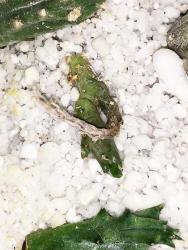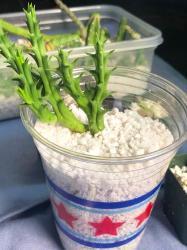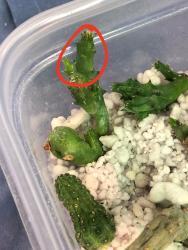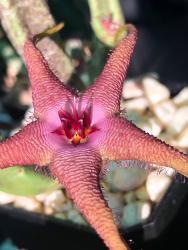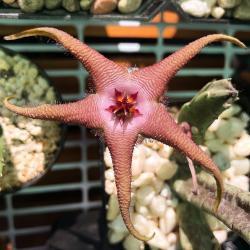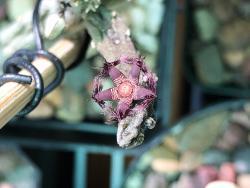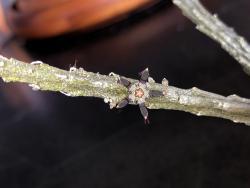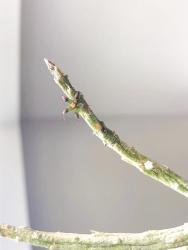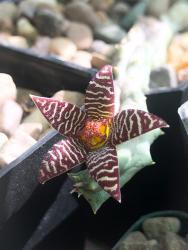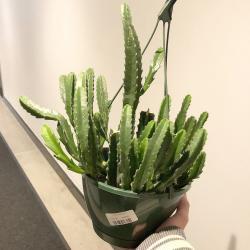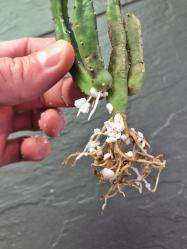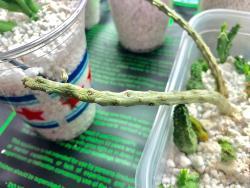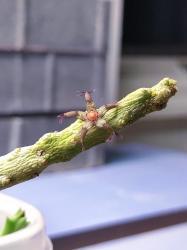BrendanCS said:Definitely.
Has anyone else tried growing these this way, or hydroponically?
Hi Brendan. I have been growing some of my cacti in a similar fashion. I started doing this about 1990 and I have obtained excellent results - the plants have grown robustly - nice and plump with excellent spination and flowers/fruit. On occasion I have used coarse perlite instead of pumice for the substrate - it works just as well for me.
I devoted a web page to this titled "Cultivating Cacti semi-hydroponically" at ………
http://jp29.org/brculthydro.ht...
……… if you would like to see the photos that accompany the following text, please visit there (it would be very time and space consuming for me to post them here, sorry).
The text from my web page ………
I use drain-to-waste methodology ………
https://www.gchydro.com/info/w...
Equipment and Materials (photo)
Potting container of prepared pumice - 2¾" plastic pots.
Acidifier solution - Liquid fertilizer with micronutrients - pH testing solution with vial.
Garden hose power spray attachment - large fine kitchen sieve (for washing raw pumice)
(photo)
Hydroponics Drain to Waste Methodology:
In a Hydroponic Drain to Waste growing System (also known as run to waste system) an inorganic growing medium is periodically saturated with a correctly pH balanced water/nutrient solution according to the plant's requirements. The water/nutrient solution is not re-cycled or re-used. A periodic flushing is required to prevent fertilizer salt build-up.
Information and Reference: Why run a Drain to Waste System?
I do not actually waste my nutrient solution. I save what issues from the container drainage holes in a storage container, check the pH in order to ascertain it's current state and use it as needed on other cacti and succulents growing in my garden patch.
Containers (photo)
I use plastic pots with generous drainage holes.
Substrate (photo)
I use an inorganic medium that consists of just one component -- what I call "freshly mined and raw" pumice - unscreened with the fines present. I use pumice because it is readily available to me free, is of light weight and I have always had great success using it in my growing media. Similar inorganic products such as "Kitty Litter" or other expanded clay material - sometimes mixed with sharp grit, gravel or decomposed granite - will work just as well.
Freshly mined raw pumice as described above (photo)
I don't screen out the small granular pumice fines - but I do wash out the dust using a fine sieve in conjunction with a "power spray head" garden hose as dust tends to migrate to the bottom of containers where it can form a drainage impeding "sludge".
Washing out dust using a "power spray head" garden hose and fine sieve (photo)
Washing continues until the water runs from the sieve reasonably clear (photo)
The pumice described above after washing it to remove dust (photo)
Exemplar Discocactus grown in pumice prepared as described above (photo)
Water/Nutrient solution:
I use Tucson City tap water in conjunction with the recommended amount of Algoplus (Algoflash) 5N.7P.5K Cactus Formula liquid fertilizer which contains magnesium and micro-nutrients. I check and adjust the solution pH to 5.5 - 6.0 using a General Hydroponics GH1514 pH Control Kit prior to each use.
Watering (using the nutrient solution described above):
Active growing period With the arrival of warm spring weather I water my plants with increasing frequency. I insure my plants receive copious amounts of water during the hot Arizona summer months. When I water during this time I do it from above and soak the plants until the nutrient solution runs freely from the drainage holes.
Because these cacti are CAM plants (stomata opening at night during very hot weather) I water at early evening during our summer months.
Resting period (winter): The plants that I grow, being from tropical habitats, do not require a winter cold resting period in order to produce flowers the following spring (that is one reason I favor them) - winter dormancy for them results from the very dry conditions they experience during this time (described as a period of great aridity in their habitat). Therefor they only receive occasional very light watering during this time to prevent shriveling and maintain general plant health.
Periodic watering/flushing with pH adjusted city tap water:
Performed monthly during the spring and summer (except during our "Monsoon" season) in order to eliminate fertilizer salt build-up. I check and adjust the city tap water pH to 5.5 - 6.0. using a General Hydroponics GH1514 pH Control Kit prior to use.

